New Preston railway station on the way – but delays are possible …
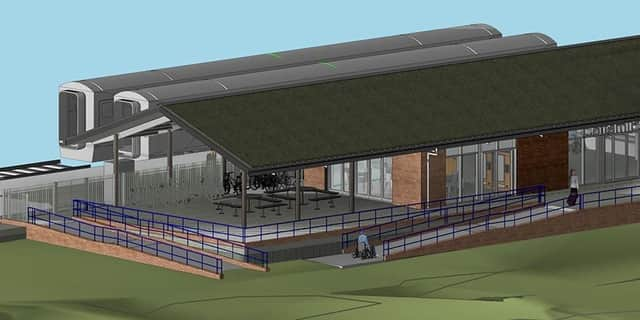
 Cottam Parkway's arrival could be delayed until the end of the decade (image: Lancashire County Council)
Cottam Parkway's arrival could be delayed until the end of the decade (image: Lancashire County Council)
Lancashire County Council’s development control committee approved the proposed Cottam Parkway facility, which will offer passengers five-minute journey times into Preston city centre and 20-minute travel times to Blackpool.
However, the boarding point could yet be stuck in the sidings for five years if the £24m scheme gets bogged down in land ownership wrangles.
Committee members heard that the county council itself – as the authority behind the project - had requested to be given until 2028 to start construction work, in case compulsory purchase orders were needed to acquire all of the necessary land.
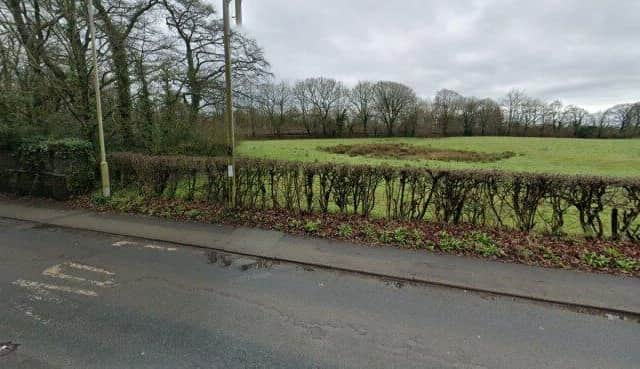
 The location of Cottam Parkway's site entrance, off Lea Road
The location of Cottam Parkway's site entrance, off Lea Road
When the planning application was submitted last October, the indication was that building would begin soon after permission was granted and take around 18 months to complete - meaning that the first passengers could have been hopping on and off trains at the site during the winter of 2024/25.
While it is far from certain that the timetable will be subject to such a severe delay as that now permitted, it does at least raise the possibility of the station not coming into operation until the end of the decade.
Doubts have also been raised over whether the facility will ultimately include the ticket office that has been designed into the plans.
Since the blueprint for Cottam Parkway was first drawn up, a controversial proposal from the rail industry has suggested shutting almost all of England’s 1,000 full and part-time ticket booths. A consultation into the closure plan received a record 680,000 responses, which are currently being assessed.
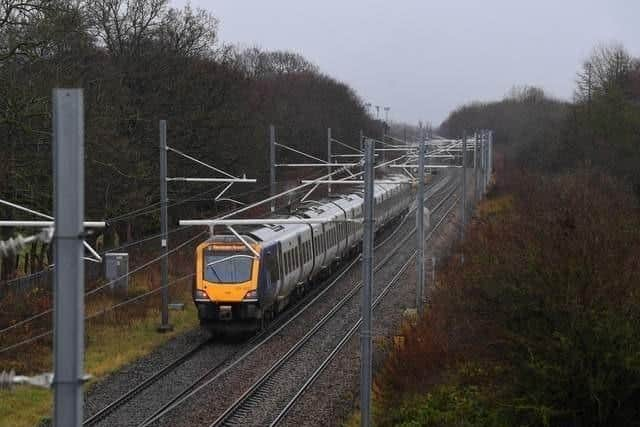
 Cottam Parkway will appear on the South Fylde line connecting Preston and Blackpool, sited in between Sidgreaves Lane and Lea Road
Cottam Parkway will appear on the South Fylde line connecting Preston and Blackpool, sited in between Sidgreaves Lane and Lea Road
After the question of ticket-buying facilities at Cottam Parkway was brought up at the committee meeting, County Hall senior planner Helen Ashworth said that the matter was “outside of our hands” - and could not be mandated by the authority.
The station will serve the burgeoning housing developments in and around North West Preston, with a catchment area of around 12,000 homes in Cottam, Ingol and Lea. It is estimated that half a million journeys could start or end at the stop each year.
The facility will feature two platforms - long enough to accommodate eight-carriage trains - along with passenger waiting shelters. A footbridge and lifts will enable level platform-to-platform access for those with mobility issues.
The station’s main access point will be to the north, via a new route that is to be built off a roundabout from the recently-opened Cottam Link Road.
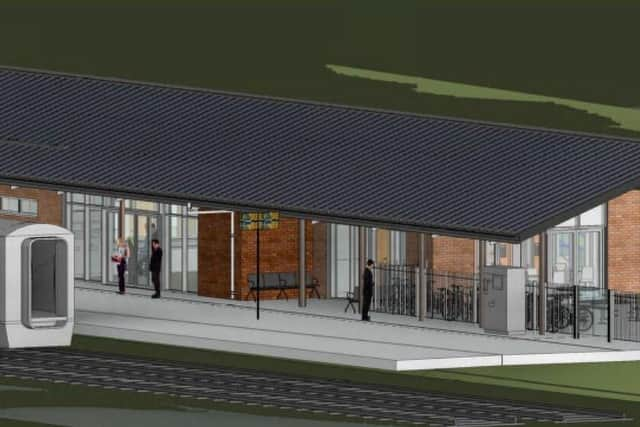
 Cottam Parkway's south-facing roof will feature solar panels
Cottam Parkway's south-facing roof will feature solar panels
An entrance will also be created from Lea Road to the east, but that route will be reserved for pedestrians, buses and emergency vehicles - and will also act as a secondary means of escape in the event of a need to evacuate.
While committee members were enthused by the principle of the development, some regarded the potential five-year delay as a danger signal. Ordinarily, planning permissions require work to begin with three years of approval being granted.
County Cllr Alan Schofield said he was “puzzled” as to why the usual timeframe was insufficient.
“We're not talking here about the timescale to actually do the development and complete it - because there is no restriction on that. We’re talking about when to start it.” he said.
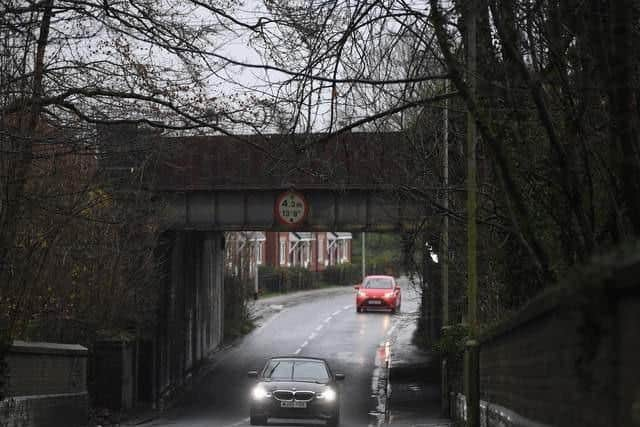
 The railway line crossing Lea Road, close to where a previous station stood until 1938
The railway line crossing Lea Road, close to where a previous station stood until 1938
Helen Ashton said that the compulsory purchase order process, should it prove necessary, “can be a lengthy one - and we wouldn't want to fetter the proposal coming forward by restricting that amount of time”.
She said that a five-year window to start work was not unprecedented, having also been allowed for another major project in that part of the city - the new Preston Western Distributor link road to the M55.
Committee members were also told that an entirely new planning application would have to be lodge should a three-year deadline ultimately fail to be met.
“In addition to the potential need for a compulsory purchase order, [the applicant] will also need to carry out works in terms of appointing contractors and…submitting the [planning] conditions [and] getting all those works discharged.
“Whilst everyone would hope that the application would get under way a lot sooner than [five years], it is felt to be beneficial to allow a developer that additional time, rather than to present any particular difficulties in…keeping the permission extant,” Ms. Ashworth explained.
County Cllr Steve Holgate said that it was nevertheless important not to send “the wrong messages” - in the case of this or any other project - about the need to be “getting on with it”.
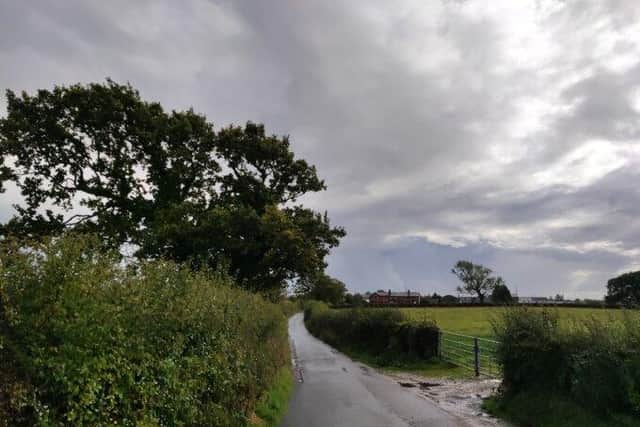
 Sidgreaves Lane will be converted into a segregated cycle and pedestrian route
Sidgreaves Lane will be converted into a segregated cycle and pedestrian route
The plans for Cottam Parkway date back a decade, but it was only after Lancashire scooped £22.3m from the government’s Transforming Cities Fund in 2019 that the prospect became more concrete. The Preston, South Ribble and Lancashire City Deal has contributed a further £2.1m towards the cost.
Committee chair Matthew Maxwell-Scott said that in view of the scheme’s long history, “maybe [permitting] an extra couple of years to make sure it happens is sensible”.
Three objections were lodged to the plans, along with four letters of support. Almost the opposition was a claim that the station should be called Lea Parkway, because it is actually within the Lea parish area.
It was also deemed by one objector to be “wasteful” not to use the former site or physical assets of Lea Road station, which closed in 1938.
“Rebuilding this loop line using the additional spare bridge would future proof the Blackpool to Preston route by increasing the line's capacity, allowing express trains to pass stopping trains at this point,” the consultation responder said.
As the Local Democracy Reporting Service revealed last year, Lancashire County Council will transfer the freehold for the new Cottam Parkway to Network Rail once it is built, having deemed that to be the lowest risk of three possible options for the station’s operation.
LETTING THE TRAIN TAKE THE STRAIN
County Hall hopes that the station will “encourage a shift in journeys from road to rail”, which will “help to reduce traffic at key congestion hotspots on Preston’s road network”.
In an attempt to encourage the most sustainable transport options for getting to the facility, buses will be able to stop right outside the station building and circulate around the site.
Meanwhile, the existing Sidgreaves Lane will become a segregated footway and cycle track.
The “parkway” element of the new Cottam station will come in the form of a 248-space car park. The fully-lit parking area will be split into two areas either side of the station buildings, with 165 spaces to the west and 83 to the east. Fourteen bays will be for blue badge holders.
Ten motorcycle parking spaces will be created, with both covered and uncovered cycle parking provided next to the station building.
However, a question mark hangs over the number of electric charging points that are to be installed. A condition of the planning permission requires the details to be approved by Lancashire County Council, in its planning authority capacity, before the development is brought into operation.
At the time the planning application was submitted, it was suggested that there would be at least 38 charging points - although that figure did not appear in the report presented to the development control committee for consideration.
One objection to the proposal noted that there was no provision for electric bicycle and motorcycle charging, nor for charging buses. They added that - given what they described as the limited number of car charging points - the station was therefore not “future-proofed”.
ALL CHANGE
The new Cottam Parkway will occupy a 14.5-hectare plot which is described by planners as having a “semi-rural” feel - and the scheme will require the removal of 25 trees, five groups of trees and 830 metres of hedgerows.
However, a report presented to development control committee members stressed that the site is “adjacent to the urban fringe” and surrounded by residential developments which are either proposed or already under construction.
The project has been designed to ensure at least a 10 percent net gain in biodiversity at the location upon completion of the station, an ambition which has been independently assessed as being feasible.
Lancashire County Council senior planner Helen Ashworth said that the impact on the landscape “will be mitigated over time by planting”. She added that the area was, in any case, a “landscape in transition”.
Committee member Anna Hindle told the meeting that areas around railways stations often become “nature havens”, but called for close monitoring and enforcement of a planning condition requiring the installation of bed nesting and bat boxes.
County Cllr Steve Holgate added that while it was regrettable to have to be building on green fields, that was “the nature of the beast” in this case.
The south-facing roof of the station building will be topped with solar panels. The footprint of the facility will be around 27 metres long by eight metres wide - witha maximum height of 5.4 metres. The separate footbridge will tower approximately 11 metres into the air.